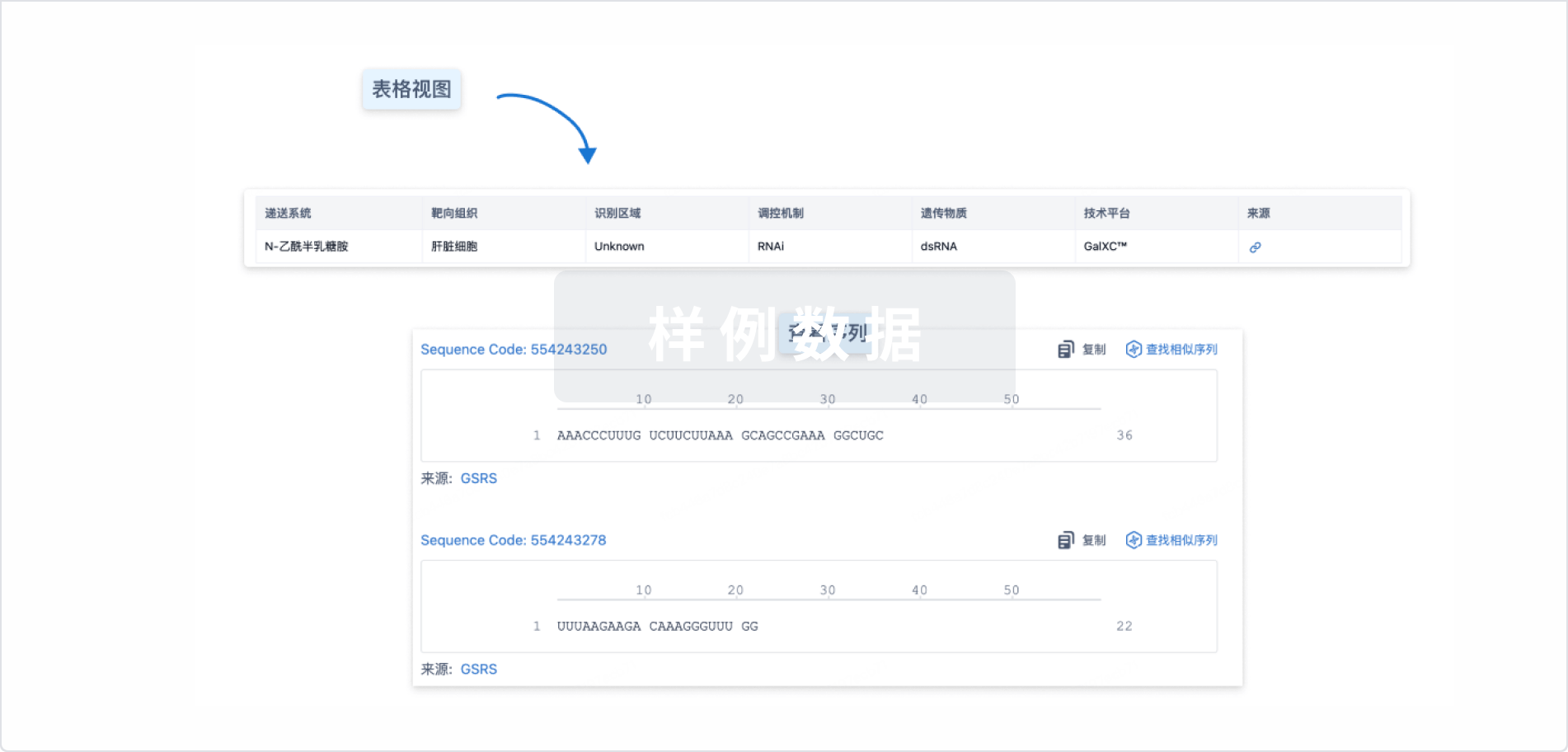预约演示
更新于:2025-05-07
CD5-2
更新于:2025-05-07
概要
基本信息
权益机构- |
最高研发阶段临床前 |
首次获批日期- |
最高研发阶段(中国)- |
特殊审评- |
结构/序列
使用我们的RNA技术数据为新药研发加速。
登录
或

关联
100 项与 CD5-2 相关的临床结果
登录后查看更多信息
100 项与 CD5-2 相关的转化医学
登录后查看更多信息
100 项与 CD5-2 相关的专利(医药)
登录后查看更多信息
5
项与 CD5-2 相关的文献(医药)2023-01-01·Frontiers in immunology
Novel miRNA-based drug CD5-2 reduces liver tumor growth in diethylnitrosamine-treated mice by normalizing tumor vasculature and altering immune infiltrate.
Article
作者: Vadas, Mathew A ; Boland, Jade ; Zhao, Yang ; Kench, James ; McCaughan, Geoffrey W ; Chen, Jinbiao ; McKenzie, Catriona ; Lockwood, Glen ; Ting, Ka Ka ; Liu, Ken ; Gamble, Jennifer R
2021-02-01·Gland Surgery4区 · 医学
The immune-related gene CD52 is a favorable biomarker for breast cancer prognosis
4区 · 医学
Article
作者: Huang, Qianfang ; Fang, Dalang ; Chen, Yongcheng ; Lu, Guan-Ming ; Zou, Caihua ; Lin, Jiayao ; Huang, Minyu ; Ma, Yan-Fei ; Luo, Zhizhai ; Qin, Qiang ; Meng, Dongdong ; Huang, Qun
2019-02-01·Diabetologia1区 · 医学
Therapeutic regulation of VE-cadherin with a novel oligonucleotide drug for diabetic eye complications using retinopathy mouse models
1区 · 医学
Article
作者: Li, Jia ; Vadas, Mathew A ; Moller, Thorleif ; Gillies, Mark ; Shen, Weiyong ; Coleman, Paul ; Yam, Michelle ; Gamble, Jennifer R ; Ting, Ka Ka ; Chan-Ling, Tailoi ; Zhao, Yang
100 项与 CD5-2 相关的药物交易
登录后查看更多信息
研发状态
10 条进展最快的记录, 后查看更多信息
登录
| 适应症 | 最高研发状态 | 国家/地区 | 公司 | 日期 |
|---|---|---|---|---|
| 实体瘤 | 临床前 | 丹麦 | - | |
| 血管疾病 | 药物发现 | 澳大利亚 | 2012-09-16 | |
| 血管疾病 | 药物发现 | 丹麦 | 2012-09-16 |
登录后查看更多信息
临床结果
临床结果
适应症
分期
评价
查看全部结果
| 研究 | 分期 | 人群特征 | 评价人数 | 分组 | 结果 | 评价 | 发布日期 |
|---|
No Data | |||||||
登录后查看更多信息
转化医学
使用我们的转化医学数据加速您的研究。
登录
或

药物交易
使用我们的药物交易数据加速您的研究。
登录
或

核心专利
使用我们的核心专利数据促进您的研究。
登录
或

临床分析
紧跟全球注册中心的最新临床试验。
登录
或

批准
利用最新的监管批准信息加速您的研究。
登录
或

特殊审评
只需点击几下即可了解关键药物信息。
登录
或

生物医药百科问答
全新生物医药AI Agent 覆盖科研全链路,让突破性发现快人一步
立即开始免费试用!
智慧芽新药情报库是智慧芽专为生命科学人士构建的基于AI的创新药情报平台,助您全方位提升您的研发与决策效率。
立即开始数据试用!
智慧芽新药库数据也通过智慧芽数据服务平台,以API或者数据包形式对外开放,助您更加充分利用智慧芽新药情报信息。
生物序列数据库
生物药研发创新
免费使用
化学结构数据库
小分子化药研发创新
免费使用

